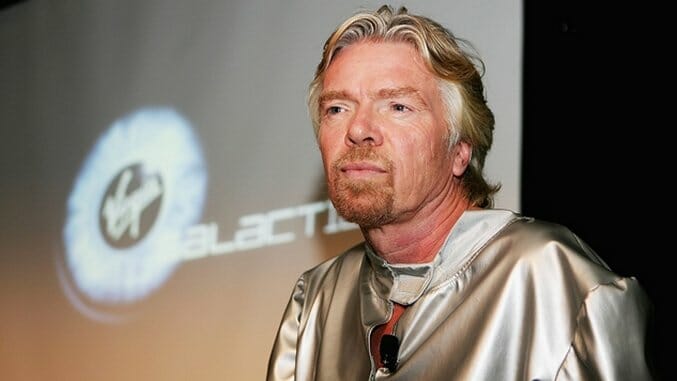Spaceport America’s Problematic “Democratization of Space Travel”
Photo by Patrick Riviere/Getty
It’s about 150 miles of creosote and juniper thick highway from my home in Albuquerque to the city of Truth or Consequences in the heart of Sierra County, New Mexico. Truth or Consequences is a sleepy town of around 6,000 with little industry, once built upon the success of its natural hot springs. In fact, the town was originally called Hot Springs, but the city hastily changed its name to Truth or Consequences when a popular 1950’s radio show of the same name pledged to host their 10 year anniversary program from the first city to change it’s name. Hot Springs earned the honor and became the city known colloquially in New Mexico as T or C.
Truth or Consequences the radio show is largely forgotten today, and Truth or Consequences the town is largely neglected—having the distinction of being one of the poorest cities, in one of the poorest counties, in one of the poorest states in the U.S.
Unexpectedly, this dusty city, in a dusty tract of New Mexico rarely visited by tourists, is now Earth’s premier portal to another world.
Spaceport America’s Inception
In 2008, voters in Sierra County approved a tax hike that would provide the funds necessary to build a compound promoted by millionaire Richard Branson as part of his Virgin Galactic venture. The space hub would reside only 28 miles outside of T or C. Cutting public school budgets, and holding off on city water system repairs, Sierra County generated five million dollars by 2014 to put toward the first commercial spaceport in the world, with big hopes of becoming a leader in the aerospace industry, and in anticipation of a massive boon to local economy.
There had been lots of talk in the preceding years about creating the opportunity for leisure travel to outer space. Richard Branson was just one of several impresarios getting in on what everyone assumed would be a massive moneymaker. Amazon’s Jeff Bezos and multi-business mogul Elon Musk also started to develop their own commercial space flight programs. All began busily promoting their new business endeavors as the birth of a new age of space travel, “the people’s space age.”
-

-

-

-

-

-

-

-

-

-

-

-

-

-

-

-

-

-

-

-

-

-

-

-

-

-

-

-

-

-

-

-

-

-

-

-

-

-

-

-








































